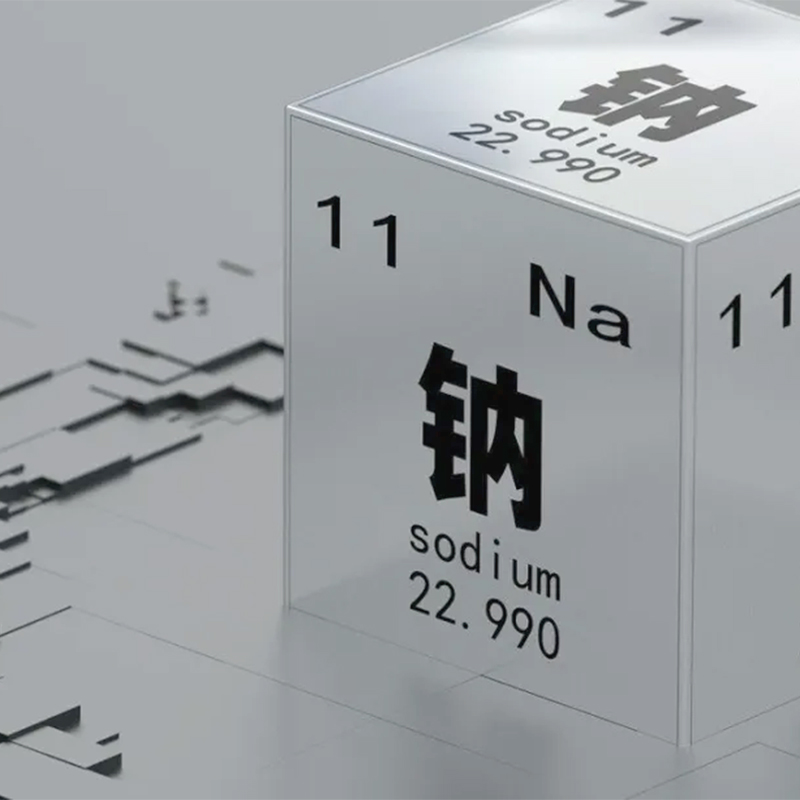-
Call Us
0086-592-7161550 -
Email us
ping@aotbattery.com -
Skype
ping@aotbattery.com
Call Us
0086-592-7161550Email us
ping@aotbattery.comSkype
ping@aotbattery.com

The manufacturing process of sodium-ion batteries can generally be divided into several key steps: raw material preparation, cathode and anode material production, electrolyte and separator preparation, electrode fabrication, cell assembly, and finished product testing and inspection. Compared to the production process of lithium-ion batteries, sodium-ion batteries differ in raw material selection and certain process steps, but the overall workflow is similar. Their packaging forms are alike (cylindrical, pouch, prismatic aluminum shells, etc.), their production processes largely overlap, and their production lines are compatible (including electrode manufacturing and cell assembly). The main distinction lies in the fact that sodium-ion batteries can use aluminum foil as the anode current collector, allowing both cathode and anode tabs to be connected using aluminum tabs. This simplifies the tab welding process.
Raw Material Preparation
The main raw materials for sodium-ion batteries include cathode materials, anode materials, electrolyte, separators, and battery casings. The selection and quality of these materials directly impact the battery's performance and lifespan.
Cathode and anode materials are the core components of sodium-ion batteries, and their performance differences determine the battery's energy density and charge-discharge efficiency.
Electrolyte serves as the medium for sodium-ion transport within the battery.
Separators are used to isolate the cathode and anode, preventing short circuits.
Battery cases are critical components that protect the battery structure and ensure sealing integrity.
Cathode Material Preparation
The cathode material is a critical component of sodium-ion batteries. Commonly used cathode materials include polyanionic compounds, layered oxides, and Prussian blue analogs. Among these, polyanionic cathode materials have become a research focus due to their stable structure and excellent cycling performance. Synthesis methods include solid-state reactions, sol-gel processes, and hydrothermal methods. The electrochemical performance of cathode materials can be enhanced by optimizing synthesis conditions and employing doping modifications.
Anode Material Preparation
Common anode materials include carbon-based materials and alloy-based materials. Carbon-based materials, known for their high conductivity and stability, are widely used in sodium-ion batteries. Preparation methods such as pyrolysis and chemical vapor deposition (CVD) are employed, by coating and drying processes. The electrochemical performance of anode materials can be improved by controlling pore structure and specific surface area.
Electrolyte and Separator Preparation
The composition of the electrolyte directly affects the ionic conductivity and stability of the battery. The electrolyte primarily consists of a solute, solvent, and additives—typically sodium salts dissolved in organic solvents. Common solvents include esters and ethers, while additives mainly comprise film-forming agents, flame retardants, and overcharge protection agents, which serve to protect electrode materials.
The separator is one of the key components of the battery, and its performance significantly impacts safety and cycle life. Separator materials, usually microporous membranes made of polyethylene (PE) or polypropylene (PP), are prepared via extrusion or stretching methods. These materials exhibit excellent chemical stability and mechanical strength, ensuring efficient electrolyte permeability and battery safety while effectively preventing internal short circuits.
Electrode Manufacturing
Electrode manufacturing is a critical step in sodium-ion battery production, comprising processes such as coating, calendering, cutting, and stacking/winding.
l Coating
The cathode and anode materials are coated onto metal foils separately. The coating process includes slurry preparation, coating application, and drying. The uniformity and thickness of the coating directly affect the battery's capacity and performance.
l Rolling pressure
After coating, the electrode materials undergo calendering to enhance density and conductivity. Parameters such as pressure, speed, and temperature must be precisely controlled during calendering. The applied pressure ensures tighter bonding of the electrode materials, improving mechanical strength and conductivity.
l Cutting
Cutting precision significantly impacts battery assembly and electrical performance. Post-calendering, the electrode materials are cut to specified dimensions using high-precision cutting equipment to ensure dimensional consistency for subsequent stacking or winding processes.
l Stacking/Winding
Depending on battery design, the cut electrode materials and separators are assembled via stacking or winding:
Stacking is used for prismatic batteries, where layered stacking of cathode/anode materials and separators forms the cell core.
Winding is applied to cylindrical batteries, where continuous spiraling of electrodes and separators creates a coiled cell structure.
Alignment accuracy and tension control during stacking/winding are key factors in ensuring optimal battery performance.
Battery Encapsulation and Assembly
l Encapsulation Process
The encapsulation process includes core cell insertion, sealing, electrolyte injection, and heat sealing. Quality control during encapsulation is critical and must strictly adhere to process specifications.
- First, the encapsulation material is tightly bonded to the cell core using methods such as hot pressing and ultrasonic welding.
- Next, the electrolyte is evenly injected into the cell core using precision filling equipment.
- Finally, the encapsulation material is heated to form a tightly sealed structure.
l Battery Assembly
Battery assembly involves selecting the encapsulation type, choosing encapsulation materials, and implementing quality control during the process. Common encapsulation types include pouch, hard case, and cylindrical configurations, with the choice depending on the application and performance requirements.
l Encapsulation Types
- Pouch Encapsulation: Uses aluminum-plastic film for sealing, offering lightweight and flexible properties, making it suitable for portable devices and power batteries.
-Hard Case Encapsulation: Employs a metal casing for sealing, providing excellent mechanical strength and protection, ideal for automotive and energy storage systems.
-Cylindrical Encapsulation: Combines a metal casing with wound electrodes, featuring mature technology and stable performance, widely used in small electronics and power batteries.
l Encapsulation Materials
Material selection considers chemical resistance, heat resistance, and mechanical strength. Common materials include:
- Aluminum-plastic film: Offers superior airtightness and flexibility for pouch cells, directly impacting sealing performance and cycle life.
- Aluminum casing: Provides robust mechanical strength and protection for hard-case and cylindrical cells, with thickness and machining precision critical for safety and reliability.
Finished Product Testing and Inspection
Encapsulated batteries undergo rigorous testing to ensure performance and safety.
l Electrochemical Performance Testing
Includes capacity tests, cycle life tests, and rate capability tests to evaluate actual capacity, cycling stability, and fast-charging/discharging performance.
l Mechanical Performance Testing
Comprises vibration, drop, and crush tests to verify mechanical reliability under usage conditions.
l Safety Performance Testing
Involves short-circuit, overcharge/over-discharge, and nail penetration tests to assess safety under extreme conditions.
Production Environment and Safety Management
l Production Environment
Sodium-ion battery manufacturing requires strict cleanliness, temperature, and humidity control:
-Cleanliness control: Achieved via air purification and process protection to prevent contamination.
-Temperature/humidity control: Maintained using HVAC systems to ensure material stability and process consistency.
l Safety Management
Strict safety protocols are enforced, including fire, explosion, and chemical hazard prevention. Employees must undergo specialized training and adhere to operational procedures.
l Fire Prevention Measures
- Firewalls, smoke detectors, and extinguishing systems are installed.
- Regular fire drills and comprehensive fire suppression systems are mandatory.
l Explosion Prevention Measures
- Explosion-proof equipment and processes are implemented.
- Critical equipment meets explosion-proof standards, with strict control of flammable materials.
l Chemical Hazard Control
- Isolation zones and protective gear are used to minimize chemical exposure.
-Chemical usage and emissions are tightly regulated to ensure environmental and personnel safety.

Tel/Whatsapp: 0086-592-7161550

Scan to wechat:
